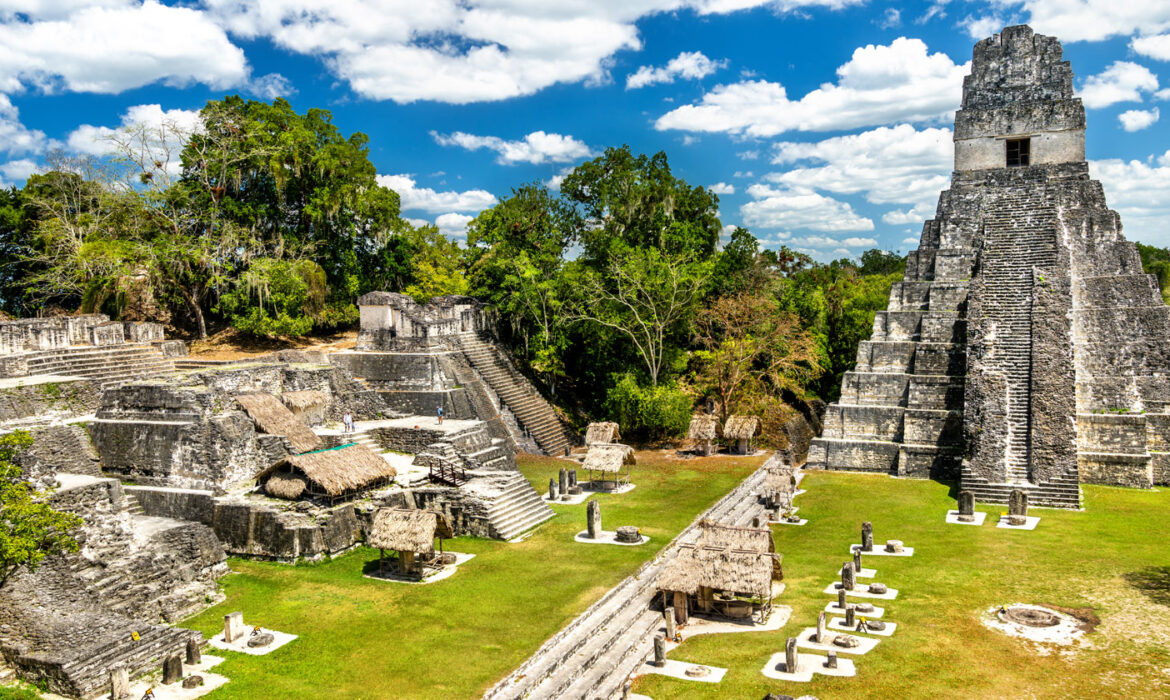Super solid architecture of the ancient Mayans
The Mayan buildings, temples and pyramids of ancient Central America were strong and durable due to a combination of three main factors including location, engineering and construction materials. In February 1976, a 7.5 magnitude earthquake shook the Central American country of Guatemala, killing 23,000 people and injuring many more. This earthquake originated from the Motagua fault, the meeting point of the North American and Caribbean tectonic plates. It caused tens of thousands of local people's houses built of bricks to turn into ruins in just a few seconds.
In February 1976, a 7.5 magnitude earthquake shook the Central American country of Guatemala, killing 23,000 people and injuring many more. This earthquake originated from the Motagua fault, the meeting point of the North American and Caribbean tectonic plates. It caused tens of thousands of local people's houses built of bricks to turn into ruins in just a few seconds.
However, the ancient Mayan city of Tikal was one of the few areas in Guatemala that was not leveled by the earthquake. Although the quake uprooted many trees, the city's limestone buildings - including the iconic pyramids - did not show any cracks. This makes many people feel strange, because the Mayans, who lived thousands of years ago with limited technology, created solid and durable architecture, similar to the most modern construction techniques. Tikal city is hidden in the northern jungle in Guatemala. The Maya began residing here between 300 and 900 BC. The city's grandest buildings were built centuries later, when the Maya were at the height of their power in 600 to 900 AD. The city has a total of about 4,000 structures, most of which have yet to be excavated.
Tikal city is hidden in the northern jungle in Guatemala. The Maya began residing here between 300 and 900 BC. The city's grandest buildings were built centuries later, when the Maya were at the height of their power in 600 to 900 AD. The city has a total of about 4,000 structures, most of which have yet to be excavated.
The Maya often built houses around squares of various shapes and sizes. The palace they built for their kings consisted of many floors, surrounded by towers and courtyards. In addition, the city of Tikal also has pyramids, similar to the Egyptian pyramids in basic design but different in finishing.
The Mayan pyramids are multi-tiered [stepped pyramids], have a slightly steeper angle of inclination, and their exteriors are as richly decorated as the rooms on the inside. This is where the Mayans used it for religious purposes and as a mausoleum for their leaders after their death.
The city of Tikal even has several courts to play tlachtli or pok-ta-pok, a traditional Mayan ball game in which players are allowed to use only their elbows, knees, and hips.
There are many explanations for the durability of Mayan architecture, the first of which is related to location factors. Because they were familiar with the surrounding terrain, the Maya often built their largest settlements in places that were largely safe from natural disasters. The swamps distributed around the city of Tikal helped mitigate and prevent the impact of seismic waves during the 1976 earthquake.
Although swamps protect cities from damage caused by earthquakes, they are also prone to flooding. The Maya solved this problem with careful urban planning, placing their buildings on high ground so they stayed dry during the rainy season. In addition to choosing a wise construction location, the Maya also possessed unique construction techniques.
The Mayan pyramids are one of the most stable and earthquake-resistant structures ever created by humans, comparable to Roman domes. This is because the stone layers below are always larger and heavier than the stone layers above the pyramid, helping the structure not to collapse, according to research results from Cairo University (Egypt) published in Heritage Science magazine in 2020.
If location and technique are the first two factors that contribute to the durability of Mayan structures, the third and most important factor concerns construction materials. .
Despite the difficulties in using available natural resources, the Maya constructed their buildings out of stone, which they firmly bound together with limestone mortar through calcined technology. When they heat limestone to temperatures above 900°C, they create quicklime – a durable compound that hardens when exposed to CO2 gas. The Mayans discovered this method around 1100 BC. So when Tikal entered its glory days, the city had countless fortified buildings, surviving millennia of exposure to the region's tropical climate.
In addition to firing technology, the Maya also mixed other ingredients from the environment into their limestone mortar. In 2023, mineralogists at the University of Granada (Spain) studied architectural features in Mayan ruins in Copán, south of the city of Tikal. They discovered that the Mayans mixed quicklime with the resin of two native tree species, chukum and jiote.
On the assumption that these biological additives provided practical benefits rather than for ceremonial purposes, the team recreated the Mayan mortar mixture, allowing them to examine its structure through through a microscope. Finally, they confirmed the above assumption was correct. After mixing into the mortar mixture, the tree resin is absorbed and encased in calcite crystals, forming a solid cement-like structure.
“These organic substances profoundly influence the structural characteristics of the mortar, making it more durable against physical and chemical weathering,” the team concluded. It's worth noting that the Mayans were not the only civilization to add materials taken directly from the surrounding environment to their mortar. Recently, researchers have discovered many ancient architectural works containing traces of diverse ingredients such as milk, cheese, beer and even urine. For example, the mortar of the Great Wall and the Forbidden City in China contained starch derived from glutinous rice, while the Roman architect Vitruvius – in his book De Architectura – recommended using cooking oil as an additional ingredient to create a waterproof mortar.








































